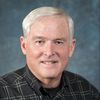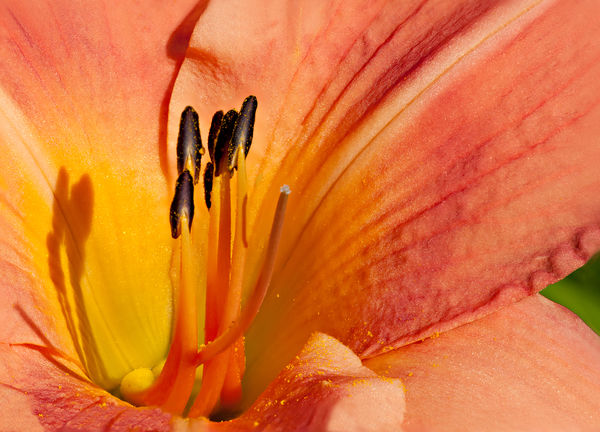Focus Stacking Focus Method
Dec 7, 2019 11:29:22 #
I've tried 2 methods of focusing for macro focus stacking. The first is to keep the camera in a fixed position and turn the focus ring to focus at different depths by eye. The second is to use a rail on the tripod that allows the camera to be moved closer or farther from the subject without moving the focus ring. This method allows movement in measurable increments (matched to depth of field), but also changes the perspective slightly since camera-to-subject distance is changing. I would be interested in additional pros, cons, and preferences. Thanks.
Dec 7, 2019 11:32:36 #
User sippyjug104 does many focus-stacked. You might check in with him or take a look at his topics. The most recent: https://www.uglyhedgehog.com/t-618688-1.html
.
.
Dec 7, 2019 11:34:45 #
Dec 7, 2019 11:35:52 #
Thank you Linda. Your comments are always thoughtful and helpful.
Dec 7, 2019 11:38:18 #
Dec 7, 2019 11:44:25 #
What cameras? Some like the Nikon D850 does focus stacking automatically. Would it be safe to assume yours does not?
Dec 7, 2019 11:49:02 #
PlymouthWoodworker wrote:
I've tried 2 methods of focusing for macro focus s... (show quote)
The new Canon EOS RP mirrorless does this automatically. They call it focus bracketing. It's great.
Dec 7, 2019 11:51:43 #
As you move the focus ring or slide position do you flip the shutter. How do you stack the images, in software on computer. Or does your camera ‘stack’ internally.
Dec 7, 2019 11:52:48 #
Thanks fredpnm and Robertven. My camera (Nikon D7100) does not do this automatically.
Dec 7, 2019 13:00:35 #
PlymouthWoodworker wrote:
I've tried 2 methods of focusing for macro focus s... (show quote)
Moving the camera by rail sure is the most precise method that gives one better results. The movements are so small that you will not see any change in perspective. The chance of seeing any changes are much greater using the first method, because the subject size can change when using the focus ring, because many a lenses are not completely free of focus breathing!
Dec 7, 2019 13:38:09 #
PlymouthWoodworker wrote:
I've tried 2 methods of focusing for macro focus s... (show quote)
Turning the focus ring is a great way to accomplish stacking, and you can ballpark the increments - better to have more and a lot of overlap than missing a slice or two.
Moving the camera will keep the magnification and the depth of field the same, because you are moving the camera and NOT changing the focus. The plane of focus is a constant distance from the camera sensor - in essence, the camera to subject distance remains the same - at least at the plane of focus. I've done it both ways, and both work well - mainly because the software takes care of most of the discrepancies.
Dec 7, 2019 13:41:29 #
PlymouthWoodworker wrote:
I've tried 2 methods of focusing for macro focus s... (show quote)
From my reading and personal experience on this the rail is best for very small subjects, and the focus barrel best for larger subjects.
Reasons appear to be that the stacking software can handle differences in magnification (using fixed camera position) better than differences in perspective (using rail/moving camera).
When using the lens barrel, if you are lucky enough to have a macro lens with 'serrations' on the focus ring these are excellent for controlling step distance.
Dec 7, 2019 14:31:51 #
John_F wrote:
As you move the focus ring or slide position do you flip the shutter. How do you stack the images, in software on computer. Or does your camera ‘stack’ internally.
Hi John, If you're referring to my post about the Canon EOS RP, You set the focus bracketing in the menu. After it takes the shots you download into computer and use focus stacking software. LR, PS, I use Helicon Focus.
Dec 7, 2019 15:30:35 #
Thanks to all. I like Grahame's thought that rail is better for small objects and focus ring is better for larger. Makes sense.
Dec 7, 2019 18:24:18 #
Grahame wrote:
From my reading and personal experience on this the rail is best for very small subjects, and the focus barrel best for larger subjects.
Reasons appear to be that the stacking software can handle differences in magnification (using fixed camera position) better than differences in perspective (using rail/moving camera).
When using the lens barrel, if you are lucky enough to have a macro lens with 'serrations' on the focus ring these are excellent for controlling step distance.
Reasons appear to be that the stacking software can handle differences in magnification (using fixed camera position) better than differences in perspective (using rail/moving camera).
When using the lens barrel, if you are lucky enough to have a macro lens with 'serrations' on the focus ring these are excellent for controlling step distance.
This was done adjusting the focus "barrel" . . .
I've done it both ways with similar results - setup time is much faster without the rail.
If you want to reply, then register here. Registration is free and your account is created instantly, so you can post right away.






